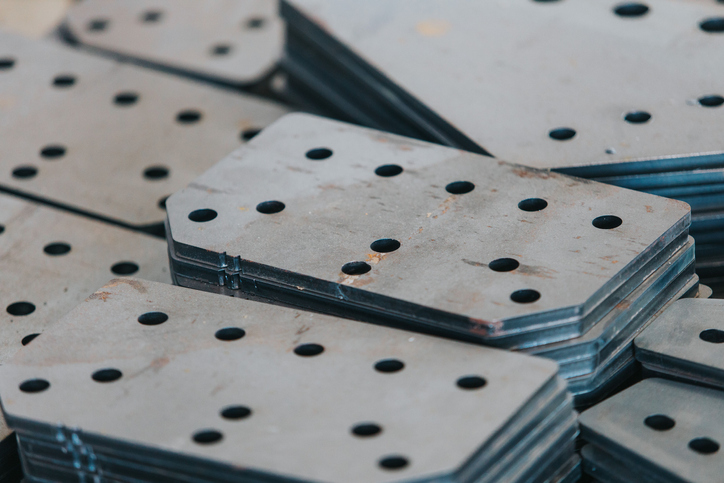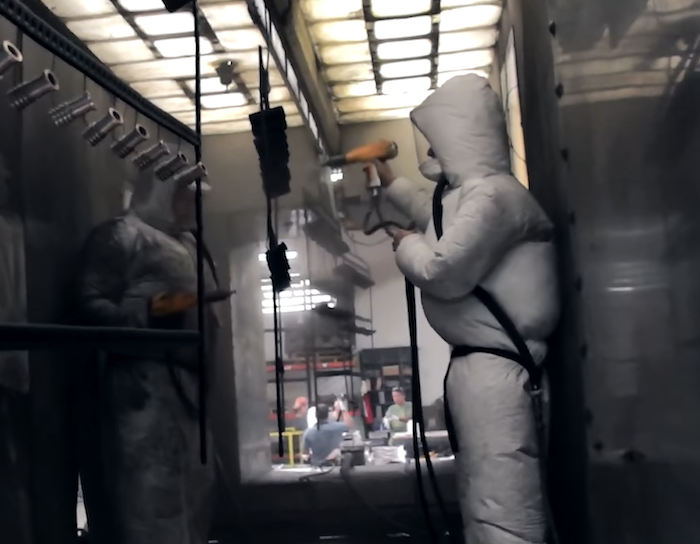Automotive metal stamping is crucial for manufacturing different shapes and forms of metal components for vehicles. This article explores what automotive metal stamping is, common parts and materials in this process, and its advantages.
What is Automotive Metal Stamping
Automotive metal stamping, or sheet metal forming, is a manufacturing process that serves to shape and form metal sheets into various components for the automotive industry. It entails using hydraulic or mechanical presses to carry out a combination of fabrication techniques to attain the end product. These include bending, punching, and drawing techniques to shape and form the metal into the desired shape, size, and thickness. Moreover, this manufacturing method is common in the production of various components that form the backbone of vehicles. From body panels to engine and transmission parts, metal stamping ensures precision, durability, as well as efficiency in mass production. Thus, allowing for the rapid production of consistent, high-quality components that meet stringent automotive industry standards.
Automotive Stamping Process
The automotive metal stamping process involves several key steps to create various vehicle components. A typical process will entail the following:
- Design and Tooling: The process begins with the design of the desired part and the creation of tooling. This includes dies and punches, which define the geometry as well as specifications of the stamped components.
- Material Selection: This is also part of the design phase but it is worth mentioning separately due to its importance. Various metals and alloys can serve depending on the specific requirements of the part. Some common materials are steel, aluminum, and sometimes advanced materials like high-strength steels or composites.

- Blanking: Blanking entails cutting large metal sheets into manageable sizes for further processing.
- Stamping: After blanking, the metal sheet undergoes several processes in line with its design. These may include techniques like piercing, notching, bending, or drawing in a bid to attain the final geometry. A combination of dies and punches achieve this by applying immense pressure to the sheet metal. This may involve single-stage or multiple stages, like in progressive metal stamping, depending on the complexity of the part.
- Trimming and Finishing: Finally, finishing touches such as deburring, cleaning, and surface treatment are carried out on the product. If the product forms part of an assembly, then it may be necessary to weld or deploy an alternative fastening method.
Automotive Metal Stamping Parts
This manufacturing method is suitable for several automotive parts, some of them are as follows:
- Body Panels: Such as hoods, doors, fenders, and trunk lids.
- Structural Components: Including chassis parts, brackets, as well as reinforcements.
- Interior Components: Like seat frames, instrument panels, and door panels.
- Powertrain Components: Such as engine mounts, transmission housings, and also gears.

- Functional Parts: Including brake components, heat shields, and exhaust system parts.
These parts require precision and attention to detail to ensure they meet the high standards of the automotive industry.
Common Materials for Automotive Components
The choice of materials for automotive stamping depends on factors such as strength requirements, weight considerations, corrosion resistance, and cost-effectiveness. Common materials include:
- Steel: Frequently used for body panels, chassis, and structural components due to its strength and durability.
- Aluminum: Preferred for hoods, trunk lids, and doors, as it offers a balance of strength and lightweight properties, improving fuel efficiency.
- Stainless Steel: Utilized for exhaust systems and decorative trim due to its resistance to corrosion and attractive finish.
- Copper and Brass: Employed in electrical components and connectors for their excellent conductivity and ease of forming.
- High-Strength Low-Alloy Steel (HSLA): Applied in structural parts like crash zones and reinforcements because of its high strength-to-weight ratio.
- Titanium: Ideal for high-performance applications.
Each material has its unique properties and advantages. Hence, selecting the right material for a particular component is crucial for ensuring performance, safety, and durability.
Advantages of Metal Stamping in the Automotive Industry
There are several advantages to using metal stamping in the manufacture of automotive parts as the following sections highlight.
Cost Effectiveness
Using metal stamping for manufacturing automotive parts proves to be highly cost-effective. The process allows for mass production of parts at a lower cost per unit compared to other methods. For instance, once a die is created, it can be used repeatedly to produce thousands of identical parts with minimal additional costs. This efficiency helps manufacturers maintain competitive pricing while ensuring high-quality parts.
Precision and Consistency
Metal stamping ensures both precision and consistency across all produced parts. Advanced stamping techniques achieve tight tolerances, which are crucial for automotive components requiring exact specifications. For example, engine brackets and transmission components need precise fits to function correctly. The consistency provided by metal stamping guarantees each part meets the required standards, reducing the need for further adjustments or rework.
High Production Speed
The metal stamping process enables the production of parts at a very high speed. Automated stamping machines work continuously, producing large quantities of parts in a short amount of time. This rapid production capability is essential for the automotive industry to meet production schedules and demand. For instance, stamping machines can produce thousands of door panels or fenders in a single day, keeping assembly lines running efficiently.
Versatility in Design
Metal stamping offers versatility, allowing for the creation of complex shapes and designs. This flexibility benefits the automotive industry, where parts range from simple brackets to intricate structural components. Techniques like deep drawing enable the production of parts with complex geometries, such as fuel tanks and body panels, providing designers the freedom to innovate without manufacturing constraints.
Strength and Durability
Stamped metal parts are renowned for their strength and durability. The process often involves cold working, which strengthens the metal through deformation. This results in parts that can withstand the rigors of automotive use, including exposure to high temperatures, pressures, and vibrations. For example, structural components like chassis parts benefit from the enhanced strength provided by metal stamping, ensuring vehicle safety and longevity.
Waste Reduction
Metal stamping is an efficient process that minimizes waste. Modern stamping techniques utilize precision cutting and forming to ensure almost every part of the metal sheet is used, reducing scrap material. This efficiency not only lowers material costs but also contributes to more sustainable manufacturing practices. For instance, producing a car’s body panels through stamping generates significantly less waste compared to machining the same parts from larger metal blocks.


